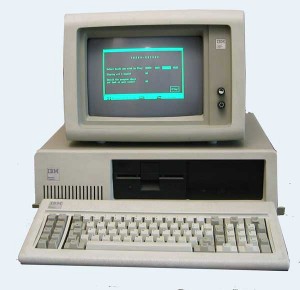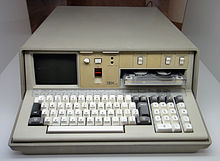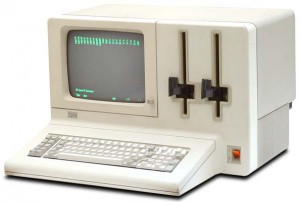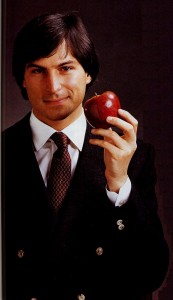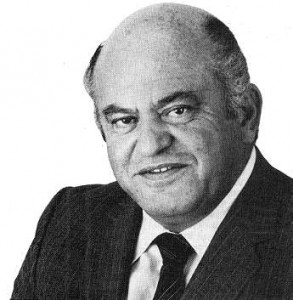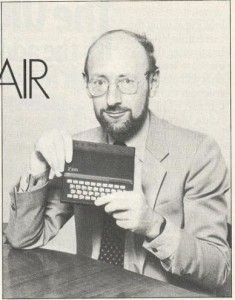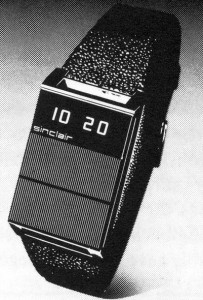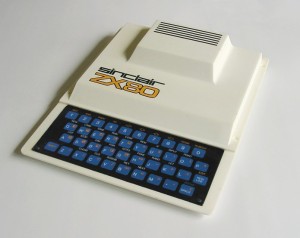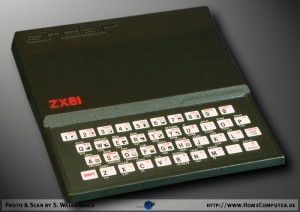IBM officially announced the IBM PC on August 12, 1981, at the Waldorf Astoria Hotel in New York. With 16 K of RAM and a single floppy drive, the machine had a suggested price of $1565; loaded, it could reach $6000. Those prices got you Microsoft BASIC for free, hosted in ROM. MS-DOS, sold under IBM’s license as PC-DOS, would cost you $40, while UCSD Pascal would cost you over $500. IBM also announced that CP/M-86 would be available — at some point. In the end, it would be over six months before Digital would finally deliver CP/M-86. When they did, IBM dutifully put it in their catalog, but at a price of some $240. Kildall, who remained convinced until his death that MS-DOS was a rip-off of CP/M and from time to time claimed to be able to prove it via this secretly imbedded message or that odd API attribute, believed that IBM deliberately priced CP/M six times higher than MS-DOS in order to make sure no one actually bought it, thus honoring the letter of their agreement but not the spirit. IBM, for its part, simply claimed that Digital had demanded such high licensing fees that they had no choice. Of the four operating paradigms, three of them — CP/M, Microsoft BASIC, and UCSD Pascal — ended up being used so seldom that few today even remember they were options in the first place. MS-DOS, of course, went on to conquer the world.
The hardware, meanwhile, is best described as stolid and, well, kind of boring. For all of its unusual (by IBM standards) development process, the final product really wasn’t far removed from what people had come to expect from IBM. There was no great creative flair about its design, but, from its keyboard that clunked satisfyingly every time you pressed a key to its big, substantial-looking case with lots of metal inside, it looked and operated like a tool you could rely on. And that wasn’t just a surface impression. Whatever else you could say about it, the IBM PC was built to last. Perhaps its most overlooked innovation is its use of memory with an extra parity bit to automatically detect failures. It was the first mass-market microcomputer to be so equipped, giving protection from rare but notoriously difficult to trace memory errors that could cause all sorts of unpredictable behavior on other early PCs. RAM parity isn’t really the sort of thing that inflames the passions of hackers, but for a businessperson looking for a machine to entrust with her livelihood, it’s exactly the sort of thing that made IBM IBM. They made you feel safe.
Indeed, and even if its lack of design imagination would just confirm hackers’ prejudices, for plenty of businesspeople uncertain about all these scruffy upstart companies the IBM PC’s arrival legitimized the microcomputer as a serious tool for a serious purpose. Middle managers rushed to buy them, because no one ever got fired for buying an IBM — even if no one was ever all that excited about buying one either. IBM sold some 13,500 PCs in the last couple of months of 1981 alone, and the numbers just soared from there.
With IBM in the PC game at last — machines actually started shipping ahead of schedule, in October — those who had been there all along were left to wonder what it all meant. Radio Shack’s John Roach had the most unfortunate response: “I don’t think it’s that significant.” Another Radio Shack executive was only slightly less dismissive: “There definitely is a new kid on the block, but there is nothing that IBM has presented that would blow the industry away.” Apple, then as now much better at this public-relations stuff than just about anyone else, took a full-page advertisement in the Wall Street Journal saying, “Welcome IBM. Seriously.” Like so much Apple advertising, it’s quite a masterful piece of rhetoric, managing to sound gracious while at the same time making it clear that a) IBM is the latecomer and b) Apple intend to treat them as peers, nothing more.
Years later it would be clear that the arrival of the IBM PC was the third great milestone in PC history, following the first microcomputer kits in 1975 and the trinity of 1977. It also marked the end of the first era of Microsoft’s history, as a scrappy but respected purveyor of BASICs, other programming languages, and applications software (in that order). In the wake of the IBM PC’s launch, Microsoft quite quickly cut their ties to the older, more hacker-ish communities in which they had grown up to hitch their wagon firmly to the IBM and MS-DOS business-computing train. Plenty of aesthetic, technical, and legal ugliness waited for them down those tracks, but so did hundreds and hundreds of billions.
The other players in this little history I’m just completing had more mixed fates. Seattle Computer Products straggled on for a few more years, but finally went under in 1985. Rod Brock did, however, still have one thing of immense value. You’ll remember that Brock had sold 86-DOS to Microsoft outright, but had received an exclusive license to it in return. With his company failing, he decided to cash out by selling that license on the open market to the highest bidder. Microsoft, faced with seeing a huge vendor like Radio Shack, Compaq, or even IBM themselves suddenly able to sell MS-DOS-equipped machines without paying Microsoft anything, decided retroactively that the license was non-transferrable. The whole thing devolved into a complicated legal battle, one of the first of many for Microsoft. In the end Brock did not sell his license, but he did receive a settlement check for $925,000 to walk away and leave well enough alone.
Of course, the man that history has immortalized as the really big loser in all this is Gary Kildall. That, however, is very much a matter of degree and interpretation. Digital Research lost their position at the head of business computing, but continued for years as a viable and intermittently profitable vendor of software and niche operating systems. Kildall also became a household name to at least the nerdier end of the television demographic as the mild-mannered, slightly rumpled co-host of PBS’s Computer Chronicles series. Novell finally bought Digital in 1991, allowing Kildall to retire a millionaire. For a loser, he did pretty well for himself in the end. Kildall, always more interested in technology than in business, was never cut out to be Bill Gates anyway. Gates may have won, but one suspects that Kildall had a lot more fun.
Although the IBM PC marked the end (and beginning) of an era, eras are things that are more obvious in retrospect than in the moment. In the immediate aftermath of the launch, things didn’t really change all that much for happy Apple, Commodore, Atari, and Radio Shack users. IBM throughout the development process had imagined the IBM PC as a machine adaptable for virtually any purpose, including going toe to toe with those companies’ offerings — thus the BASIC in ROM, the cassette option, and even an insistence that it should be possible to hook one up to a television. They even made a deal to sell it through that bastion of mainstream Americana, Sears. Still, the machine was quite expensive in even its most basic configurations, and it lacked the base of casual software (particularly games) and the dedicated users of those competitors. Nor were its graphics and sound capabilities, if perhaps surprising for existing at all, particularly tempting, especially when a new machine called the Commodore 64 came down the pipe in 1982. So, while the business community flocked to the IBM and MS-DOS in remarkably short order, the world of home, hobbyist, and educational computing would remain fairly divorced from that of the IBM PC for quite some time to come. MS-DOS would win out in the end here as well, but that would take more than a decade instead of mere months, allowing space for some of the most vibrant and fun computing cultures ever to grow and thrive. Thus, just as with its predecessor CP/M, I’ll likely have less occasion to talk about the MS-DOS world than its industry success might suggest — at least until about 1990, should we get that far.
Of course, to get to 1990 we really have to get out of 1981, don’t we? I have just one more subject to cover, and then we’ll do that at last.
(Usually when I write about something in this blog I’m digging for every scrap of information to try to piece together a history I can have confidence in. In the case of this topic, though, I had mountains of material at my disposal; the birth of the IBM PC and particularly the downfall of Kildall and CP/M must be one of the most commonly told tales in computing history. As such, the hardest thing became trying to separate the, shall we say, “folk histories” from the more rigorously researched sources. Some quick but by no means exhaustive notes on sources:
Of the many mainstream books that profile Gates and/or Microsoft, I was most impressed with Hard Drive by James Wallace (in spite of the cheesy title), and used it most extensively of all.
The very first issue of PC Magazine gives a great picture of the IBM PC’s earliest months, when no one was certain of the uses to which it would eventually be put, and also features a great interview with a Bill Gates on the verge of becoming, well, Bill Gates.
David J. Bradley wrote a great memoir of Project Chess for Byte‘s September 1990 issue, and another that admittedly goes over much of the same ground in the IEEE Computer of August 2011.
Tim Paterson wrote articles about the development of MS-DOS for the March 1983 Softalk for the IBM PC and the June 1983 Byte.
Accidental Empires and its television companion Triumph of the Nerds are fun and give decent overviews, but don’t really drill much beyond easy stereotypes, and by focusing almost exclusively on Apple, Microsoft, and IBM miss about 85% of what was interesting about computing in the 1980s. Kind of like this series of posts, come to think of it, but, hey, this is just one topic in a blog, right?)
